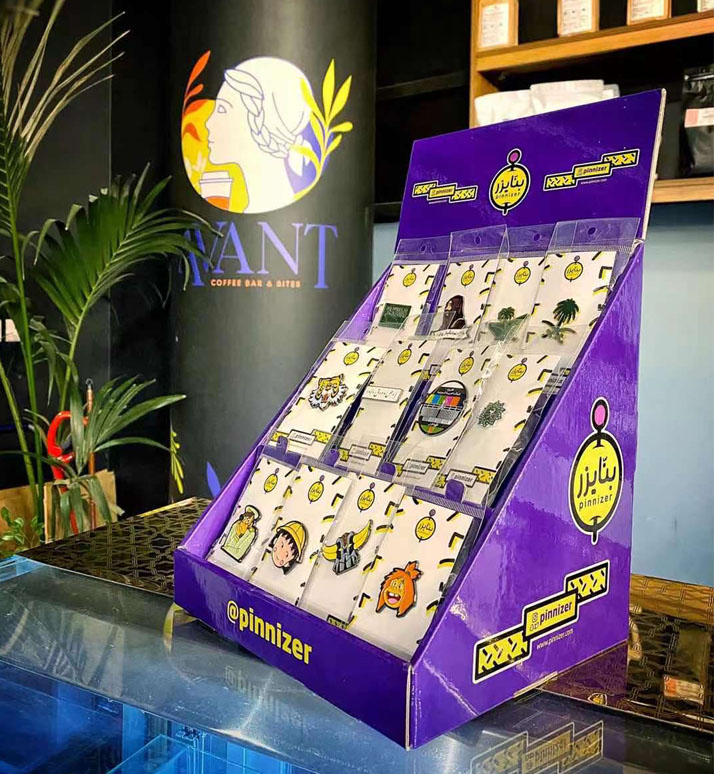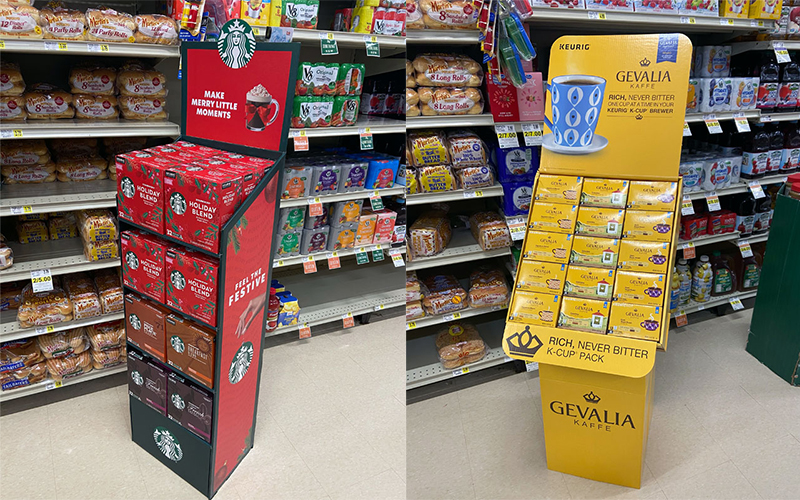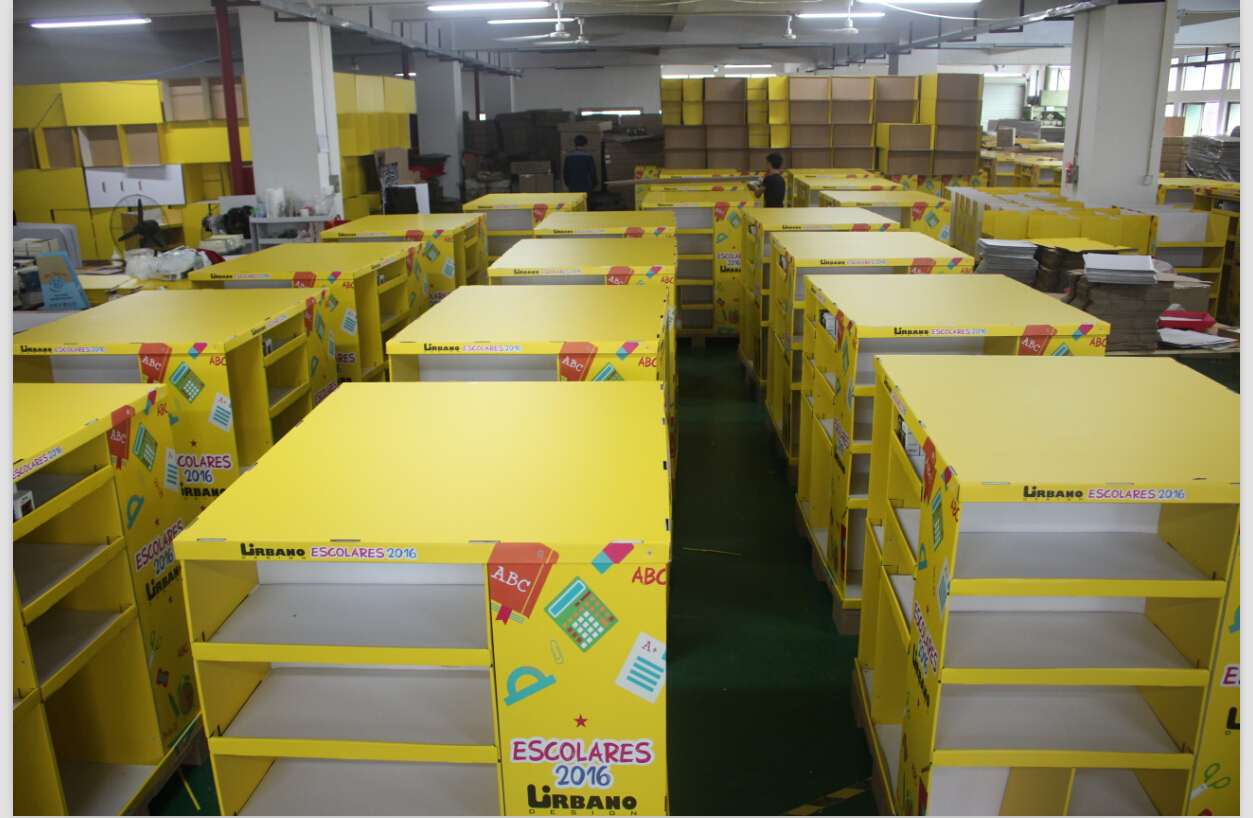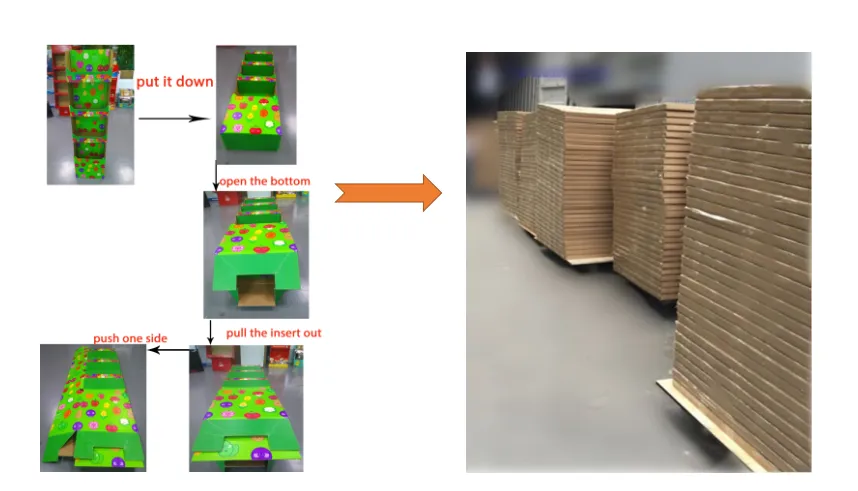Are you trying to be more eco-friendly but get confused by all the options? It’s hard to know what really helps. Here's a clear guide to making sustainable choices.
An eco-friendly retail display uses sustainable materials like recycled cardboard, is designed to minimize waste, and can be easily recycled or reused. It focuses on the entire lifecycle, from how it's made to what happens to it after a promotion ends. It’s a full-circle approach.
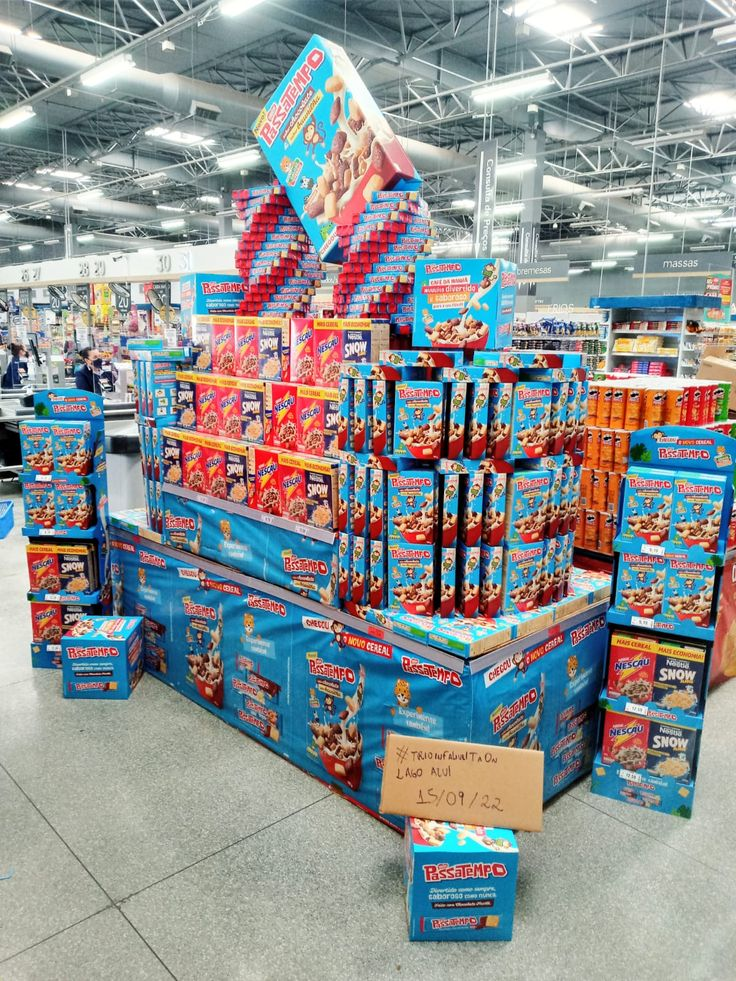
Understanding the basics is one thing, but how do these principles apply in the real world of design and retail? It's about making smart choices at every step. Let's break it down further, starting with the heart of the matter: the design process itself.
What makes a design eco-friendly?
You have a great idea for a display, but is it actually sustainable? It's easy to get lost. Here’s how you can make sure your design is genuinely good for the planet.
An eco-friendly design focuses on three key things: using sustainable materials, minimizing waste during production, and planning for its end-of-life. This means thinking about recyclability and reusability right from the very start. It is not an afterthought.
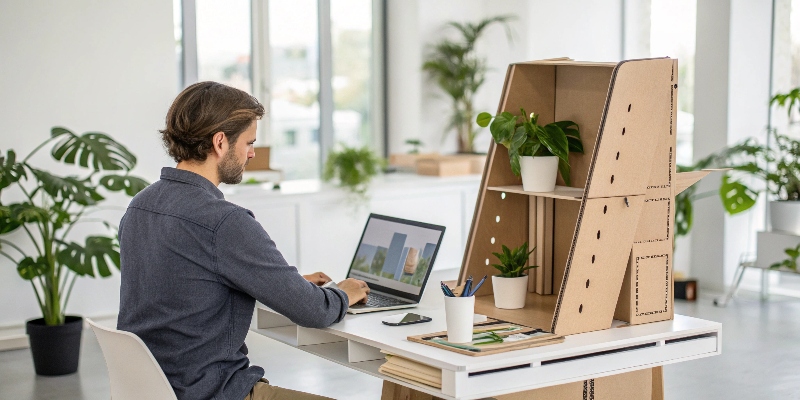
To me, a design is only successful if it’s also sustainable. Over my 16 years in this industry, I’ve learned that sustainability isn't a limitation; it’s a driver of innovation. Let's dive deeper into how these ideas take shape.
Material Selection is Everything
The foundation of an eco-friendly display is the material it's made from. You have to start here. I always recommend materials like corrugated cardboard with a high percentage of recycled content. We also look for paper that is FSC (Forest Stewardship Council) certified, which guarantees it comes from responsibly managed forests. The ink matters too. We use soy-based or water-based inks instead of traditional petroleum-based ones, as they are less harmful to the environment and make the cardboard easier to recycle. It's about avoiding plastics and non-recyclable coatings at all costs.
Design for Less Waste and Easy Disassembly
A smart design uses less material to begin with. Through clever structural engineering, we can create strong, stable displays without extra bulk. This is where experience really counts. We also design for disassembly. Instead of using strong glues that make recycling impossible, we use interlocking tabs and slots. This means a retailer can easily break down the display, flat-pack it, and place it in the recycling bin. This simple change has a massive impact on what actually gets recycled.
Thinking About Shipping
The environmental impact of a display doesn't stop at the factory door. Shipping is a big factor. That’s why I design almost everything to be shipped flat. A flat-packed display takes up much less space in a truck. This means more displays can be shipped at once, which reduces the number of trucks on the road and lowers carbon emissions. It also usually means lower shipping costs for my clients, so it's a win for them and for the environment.
How can retailers contribute to environmental sustainability?
Retailers feel a lot of pressure to be sustainable, but the task can seem huge and expensive. The good news is that smart choices in your display strategy can make a big difference.
Retailers can contribute by choosing suppliers who use sustainable materials and practices, like us at Lddisplay. They can also educate staff on proper display disposal and recycling, and even reuse modular display components.
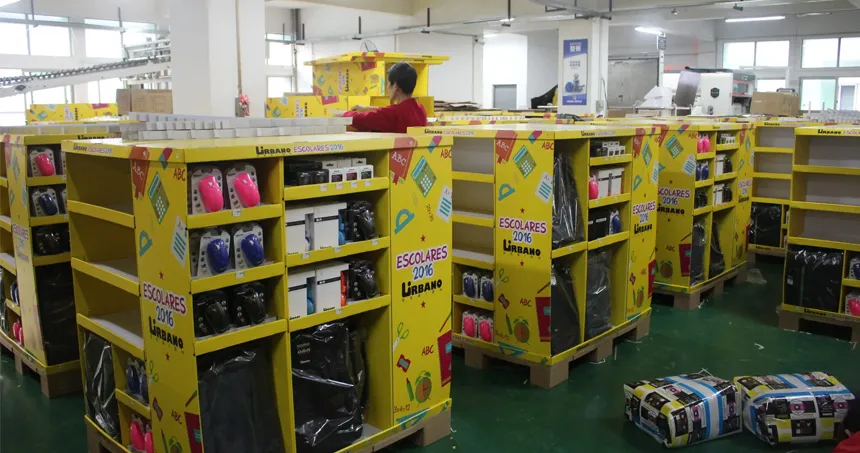
A retailer's choices have a ripple effect through the entire supply chain. You have more power than you think. Let's look at a few practical ways you can make your retail space more sustainable.
The Power of Smart Sourcing1
Your biggest impact comes from who you choose to work with. When you source your displays, ask potential suppliers tough questions. Ask them about their material sources. Are they FSC certified2? What percentage of their cardboard is recycled? Ask about their production process. Do they use eco-friendly inks3? A supplier committed to sustainability will have these answers ready. By choosing partners who share your environmental values, you vote with your dollars for a healthier planet. I've always believed in being transparent with my clients about every material and process we use.
Education at the Store Level
You can buy the most recyclable display in the world, but it doesn't matter if it ends up in a landfill. This is where your store staff come in. Training is crucial. A quick session on how to properly break down and sort cardboard displays for recycling can dramatically increase your store's recycling rates4. Put up simple, clear signs in the stockroom by the recycling bins. Make it easy for your team to do the right thing. It's a small investment of time that pays off big.
Extend the Life of Your Displays
The most sustainable display is one you don't have to replace. Think about reusability. Can your displays be modular? For example, could you use a sturdy base unit for multiple campaigns and only swap out a smaller, branded header card? This approach, which I've helped many clients implement, drastically reduces waste and long-term costs. For seasonal promotions, a well-built cardboard display can often be carefully packed away and used again the following year. It’s about shifting from a "disposable" mindset to a "reusable" one.
How do you incorporate sustainability and eco-friendly practices into your designs?
Many designers want to be creative, but they worry that sustainability rules will limit their options. I see it differently. For me, these "limits" lead to more creative and innovative solutions.
I build sustainability into my designs from the very beginning. It’s central to my process. I prioritize recycled materials5, engineer structures that use less material, and design displays that are flat-packed and easily assembled.
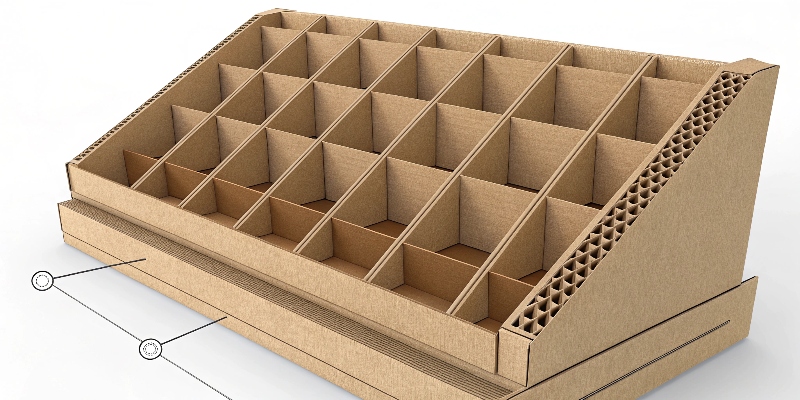
For me and my team at Lddisplay, sustainability is a core principle, not a checkbox to tick off. It influences every choice we make, from the first sketch to the final product. Here’s a look at how we put that into practice.
A Material-First Approach
Every project starts with a conversation about materials. Before I even think about the shape, I discuss the best eco-friendly options with my client. For example, a client recently wanted a high-gloss finish for a cosmetics display. In the past, that meant a plastic laminate, which makes the display unrecyclable. Instead, we used a new water-based, biodegradable coating that achieved a similar premium look without compromising our commitment to the environment. It's about knowing the latest material innovations and guiding clients to better choices.
Structural Design for a Lighter Footprint
This is where my 16 years of experience comes into play. Anyone can make a display strong by adding more cardboard, but a true expert knows how to create strength with less material. I use advanced structural design techniques6, like creating internal supports and using the physics of folds and angles to build stability. A recent project for a beverage company required a display that could hold significant weight. By designing a clever internal lattice structure, we used 20% less cardboard than their previous design, while making it even stronger. This not only saved material but also reduced the shipping weight, cutting their transport costs and carbon emissions.
| Design Element | Traditional Approach | My Sustainable Approach |
|---|---|---|
| Joining | Heavy-duty glue, staples | Interlocking tabs and slots |
| Finishing | Plastic-based laminate | Water-based, recyclable coating |
| Structure | Over-engineering with more material | Smart folds and internal supports |
| Shipping | Assembled, bulky boxes | Flat-packed to reduce volume |
Lifecycle Thinking in Practice
I always ask myself one simple question during the design process: "What will happen to this display after the campaign is over?" This question guides my decisions. It's why I avoid permanent glues and opt for easy-to-disassemble designs. I even add small, discreetly printed instructions and recycling symbols on the display itself, so store employees know exactly what to do with it. My goal is to take responsibility for the entire lifecycle of the product, making it as easy as possible for everyone down the line to be sustainable.
What is meant by retailers acting in a sustainable way?
"Sustainability" is a word retailers use a lot, but its real meaning can be unclear. It can feel like just another marketing term. But here’s a simple guide to what it means in practice.
For a retailer, acting sustainably means making conscious choices to reduce environmental and social impact. This goes beyond just recycling. It includes responsible sourcing, reducing waste and energy use, and being transparent with customers.
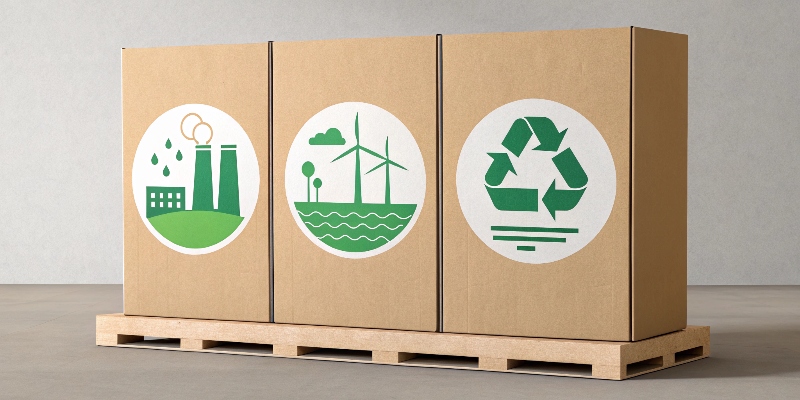
Acting sustainably isn't about one single action; it’s a complete mindset. It's a holistic approach that considers the impact of your business on the planet and its people. It's about doing business better.
The Three Pillars of Sustainability
True sustainability in retail stands on three pillars. You can't just focus on one; they all support each other.
- Environmental: This is the most obvious one. It involves reducing your footprint by cutting waste, lowering energy consumption, and preventing pollution. Choosing eco-friendly displays made from recycled cardboard is a perfect example of this pillar in action.
- Social: This pillar is about people. It means ensuring fair labor practices7 throughout your supply chain, engaging positively with your local community, and operating ethically. It's about creating a business that benefits society, not just shareholders.
- Economic: Sustainability must also make business sense. This means finding profitability through smart, sustainable practices8. For instance, reducing energy use lowers your utility bills. Using flat-packed displays cuts shipping costs. Attracting eco-conscious customers9 can increase sales. It’s about building a resilient, long-term business.
It's a Journey, Not a Destination
A sustainable retailer understands that this is an ongoing process. You look at your entire operation, from where you source your raw materials to how you light your stores. It's a holistic view. Buying sustainable displays from a partner like me is one important piece of that larger puzzle. It shows your customers that you care about the details. It signals that your commitment to the environment is real and extends to every part of your business, even the temporary displays that hold your products. It’s about being better today than you were yesterday.
Conclusion
Creating eco-friendly retail displays is a team effort. It involves smart design, sustainable materials, and conscious choices by retailers to reduce waste and support a circular economy10.
-
Explore how Smart Sourcing can enhance your sustainability efforts and improve supplier relationships. ↩
-
Learn about the importance of FSC certification in promoting sustainable forestry practices. ↩
-
Discover how eco-friendly inks can reduce environmental impact in printing and packaging. ↩
-
Find effective strategies to boost recycling rates and promote sustainability in retail. ↩
-
Learn how using recycled materials can enhance sustainability and reduce environmental impact. ↩
-
Discover innovative structural design techniques that minimize material use and enhance strength. ↩
-
Learn about the importance of fair labor practices for ethical and sustainable business operations. ↩
-
Find out how retailers can implement sustainable practices to benefit the environment and society. ↩
-
Explore strategies to engage eco-conscious customers and enhance your brand's sustainability image. ↩
-
Discover the concept of a circular economy and its role in promoting sustainability. ↩



